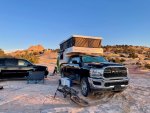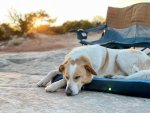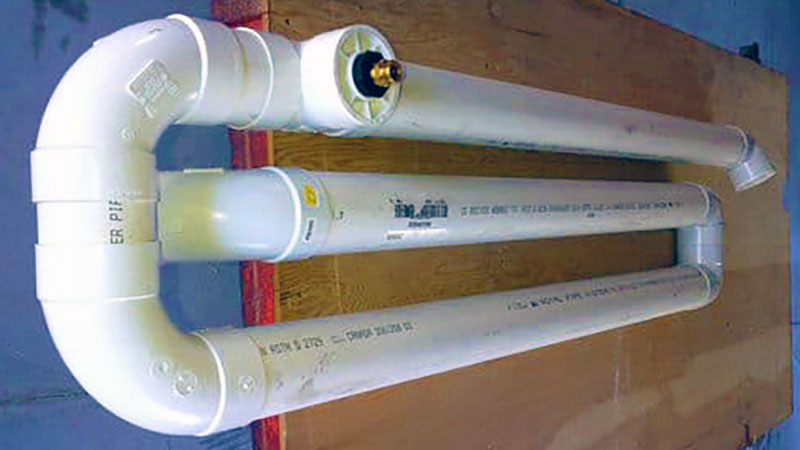As mentioned, we recently returned from a trip to Escalante, Kodachrome Basin, Bryce, etc. We did mostly dispersed camping down there and stayed in a different place each night. Will add a few images, but will also convey a few camper specific thoughts.
A couple hours of driving each day was plenty to keep the battery where I wanted it and I that was with the REDARC charge rate set to 10amps. I typically like to keep the REDARC charge rate as low as appropriate for that days re-charge needs as to not draw from the alternator at a higher rater than needed plus I do not want to run the lithium camper battery back up to 100% each day. No need. We start our trip with it at 100% but as long as I recharge to about 70 - 90% SOC each day, I'm good with that. Though, if I had solar and it kept it at 100%, I'd be fine with that, too (except when storing). I also have a battery disconnect wired in under the pickup hood which I added at the time of camper install since I knew I'd go with a lithium battery at some point and would want the switch to disconnect charging in certain instances. On this trip, on the second to last day, I turned the switch off so no charge went to the camper battery. Got home with 30% SOC and so used shore power, rather than alternator, to up the SOC I wanted before for a few week storage (50% - 60% SOC). I'd brought our flexible solar panel along since we don't have one mounted on the camper roof, but I never used it. Nice to have as a backup, though.
Some cool nights up in high-elevation Bryce (20F degrees one night) and most nights were down to about 30 - 40F. Days were in the 60s. Little to no condensation. Our camper has the black insulating foam tape around the lower extrusion but not the upper ceiling one like newer CAMP-X have. That is the only place we ever get any condensation and it is minor. Evaporates before we close down for the morning. Still amazed and so thankful for no condensation on the ceiling, walls and especially under the bed like on our FWC.
We used the water heater the first few days when lows were in the 40s then drained it before lows dropped into the 30s. Refilled it once, to take showers, then drained it again for the rest of the trip. Tip: To not waste water when you drain the water heater, use a container to catch all the water when you flip down the yellow bar to pop out the water heater filter screen and drain. Easy to catch the water and use it for something else (we use it to refill the flush reservoir on our portable toilet). We only needed to refill the 10 gallon water tank one time. That was with four fast showers and we used it for our drinking water (we have a PUR filter pitcher that we fill in the sink to filter water before storing in our personal aluminum water bottles or into a large 1 gallon aluminum bottle so it's ready to go during the day).
For the last 5 years, I've had one section of our Tundra's Double Cab (extended cab; not crew cab) rear seat removed (the 2/3 sized, drivers side). So much easier to use that area for camping trips and all our other gear hauling activities. I'd wanted a platform back there to give two tiered storage but never got around to it. Decided no time like the present and so hastily built and installed something two days before our trip. So glad I did. It made the trip so much easier. I'd left it raw plywood as I ran out of time plus wanted to test it before spending time and money giving it a nice finish. I'll now pull it all out and sand/paint or carpet, possibly revamp a bit, or even look at available aftermarket solutions (which are high dollar) since I now know it's worth it to us.
I'll limit my pictures to images with the camper and leave out the "astounding view" pictures, but I have to say, sooooooo many great views and amazing images from the trip. The CAMP-X is the perfect rig for this type of trip. You can easily and quickly get to dispersed camping and drive your entire rig to hiking and biking areas that RVs or camper trailers have trouble getting to quickly or at all. And you can plan your through route without having to backtrack to pick up a camper trailer you dropped off because of rough conditions.
Here we go...
This is a dispersed camping spot about 13 miles down Hole in the Rock road and a few miles off on a side road. For those unaware, Hole in the Rock road is a 62 mile long road that is so washboard, you either drive 8 - 10mph or 45+ mph. Needless to say I can assure everyone that a CAMP-X can easily endure two 33 mile long runs of high speed washboard road. There are only a few twisty turns that one has to slow down below "float" speed and those are brutal. Probably more wear and tear on the truck and camper in those handful of 100 yard sections than the rest of the road combined. It gets interesting because you are mixing 10mph traffic with 45 - 65mph traffic but everyone plays nice and understands each others situation and the road is mostly as wide as a 3 or 4 lane road. From my previous experience on other washboard roads, and as one would expect, this much weight on the rear axle makes 2 wheel drive mode useless and dangerous at speed so I didn't even try that. For high speed washboard work, 4 wheel high range and a rally car mentality are all you need. There was so much to see down this road and we could have spent 3 days seeing it all, but limited it to the highlights (Devil's Garden, Peek-a-boo and Spooky slot canyons) and moved on.

Devil's Garden parking lot down Hole in the Rock Rd.
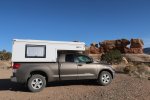
Kodachrome Basin has a couple campground options but why bother when you can camp dispersed within a mile or two. When you pay for a day pass to enter the park and hike or bike, you get use of the potable water fillup and other facilities, too.

Bryce Canyon National Park was the most dramatic area. We stayed in a campground since we hit it as just the right time and there were some openings and Mrs. Chadx was ready for a token-run, 9 minute rather than outside CAMP-X shower. Ha. Campground camper pic not worth sharing but have to sneak in one "view" shot. None of these images, including this one, are post-processed yet and as it looked to the naked eye. Really something.
By the way, for anyone that has ever been in the military, since Veterans Day 2020, Gold Star Families and US military veterans are eligible to receive free access to more than 2,000 federal recreation areas, including national parks, wildlife refuges, and forests. More info available online. Bryce was the first time I had a chance to use that free access and it is much appreciated.
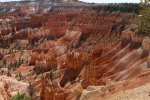
Drive westward.
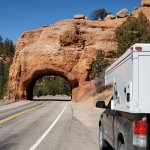
Another pull out with short hike.

Happened upon a campground down near Coral Pink Sand Dunes that had been open for maybe a week or two at the most. Many, many great dispersed camp spots in this area and ATV trails, but some looked like the sand depth could be an issue and we'd never experiences a campground that was so new that the outhouses still smelled of fresh paint, the cut back limbs were still pushing sap, and the spray paint on the ground was still visible that was used to mark where the gravel road and pads were to be.

This brand new campground was the last stop of note. We drove to Kanab, UT the next morning and put in for the lottery to hike 'The Wave', but didn't get it so started our meandering drive home through backroads and mountains until the snow moved into the national forest mountains southeast of Provo where we camped that night. We chose to cut the trip a day short and when we got up in the morning, headed northwest to get on the Interstate and make the 9 hour drive straight home including through pouring rain in Salt Lake, but figured that was better than two days on snowy and icy backroads through the planned mountain route. Great trip and great rig for such a trip!



